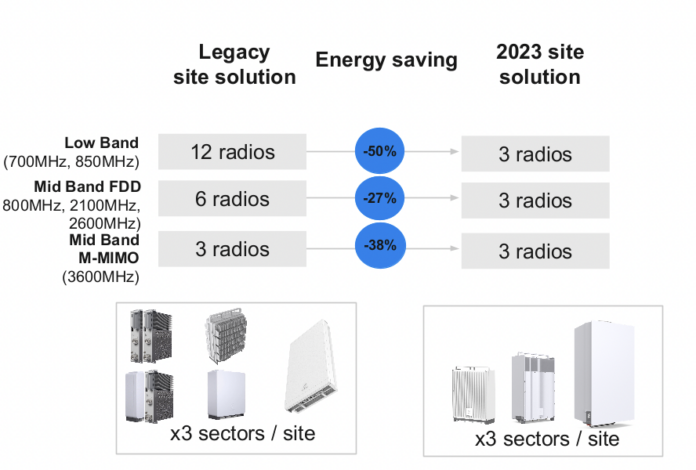Ericsson on how operators can work towards net-zero goals and deliver 5G sustainability without compromising performance
“Our target as an industry, as a society, is very clear,” Ericsson Head of Product Line 5G Sibel Tombaz said during a talk on 5G sustainability at the recent Telco Sustainability Forum (available on demand here). “We need to leave a good future for our grandchildren.” In the context of demand for mobile-enabled services continuing to grow without signs of slowing, Tombaz laid out a three-step approach to re-visioning network KPIs with sustainability top-of-mind, and doing so in a way that doesn’t sacrifice performance.
Tombaz counted some 250 commercial 5G networks around the world (60% of which are powered by Ericsson), and noted the firm’s own goal of reducing the energy consumption of its products by 40% between 2021 and 2025, and getting to net-zero by 2040. Related to its supply chain, Ericsson wants to cut emissions by 36% by 2025.
She characterized the larger transitions as from the “network machine” to the “network organism” The former is characterized as configuration-based, semi-static and algorithmic and the latter as intent-based, energy and user experience conscious, and a key enabler for societal digitalization. “We believe the next wave of 5G will enable taking the first steps towards this target.”
The high-level steps—all geared around “doing more with less”—as laid out by Tombaz are:
- Bringing sustainability to the center of network planning
- Expand and modernize the existing network while scaling up 5G
- And use AI/ML and automation for intelligent operations that boost energy savings
To bring 5G sustainability more meaningfully into the network planning process, Tombaz emphasis multi-faceted measurements of energy efficiency, including energy consumed by equipment measure in kWh, energy consumed per data volume measured in kWh/GB, and user experience metrics like uplink/downlink speeds. These measurements, taken as a whole, will inform “What is the best way to provide more with less,” she said. “We are really looking into providing the insights from multiple KPIs at the same time, so we are actually making the right input for our network design and optimization.”
The next is modernizing existing network infrastructure while scaling up the deployment of 5G; the focus here is “when we look into our network, and if you’re going to optimize the capacity and user performance while minimizing the energy consumption, we cannot look at one component only…We need to look at the whole site.” This will inform a deeper understanding of which site elements consume what amount of energy and provide what type of user value. In the real world, this would mean an operator is rolling trucks to deploy mid-band spectrum using massive MIMO radios. In that process, they can also replace legacy radios with leaner, more performant, more efficient equipment. This one-touch approach can boost site performance in a very material way while also delivering a near-50% decrease in embodied carbon emissions.
The third step, AI-ML based automation and energy-smart operations, involves leveraging advanced radio technologies that can determine existing (and predict future) network traffic loads and essentially put various radio elements into sleep mode when not needed. While a user would not notice any sort of degradation in performance, operators would certainly notice material reductions in power consumption and the associated boost in system-level energy efficiency.
Giving a real-world example, Tombaz called out Ericsson’s work with Telstra which, again, revolves around the theme of “doing more with less.” Specifically on a per-site basis, Telstra swapped out 12 legacy radios supporting low-band frequencies with three tri-sector radios for a 50% energy savings; six radios supporting mid-band FDD were replaced with three radios for a 27% energy savings; and legacy massive MIMO arrays were replaced with modern equipment for a 38% energy savings—so from 21 radios to nine radios. With the addition of energy saving software, including micro sleep for transmit and cell sleep mode, and future plans for MIMO sleep mode, AI MIMO sleep mode and baseband power saving. Network-wide, what Ericsson and Telstra put in place resulted in a 37MWh daily energy savings.
“The key focus here is that with the latest hardware and software features, we can have a huge impact to energy savings,” Tombaz concluded.
For more on RAN modernization and energy efficiency, download this guide from Ericsson.

